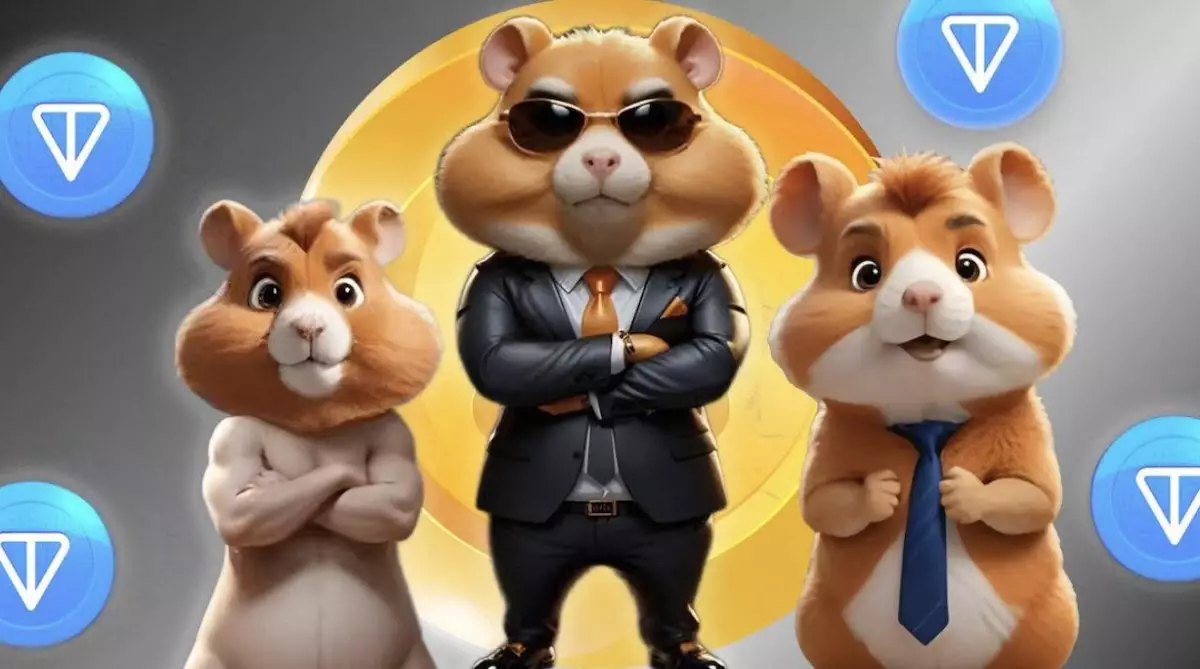The gaming industry has undergone a seismic shift in recent years, with blockchain technology and non-fungible tokens (NFTs) emerging as game-changers. One of the titles making waves in this transformational landscape is Hamster Kombat, a clicker game hosted on Telegram. The development team behind Hamster Kombat has unveiled an ambitious plan stretching through 2025, aiming to integrate innovative technologies and concepts into gameplay while cultivating a vibrant ecosystem. The implications of these changes are far-reaching, and could redefine user engagement, ownership, and monetization in gaming.
At the core of Hamster Kombat’s new roadmap lies the incorporation of NFTs. Unlike conventional in-game assets that players cannot truly claim ownership of, NFTs will allow players to own, trade, and perhaps even monetize their items within the game. This implementation signifies a significant shift in how players engage with games; ownership brings a sense of empowerment. Furthermore, the ability to trade NFTs could lead to a secondary marketplace, extending the life cycle of in-game content and creating economic opportunities for players and developers alike.
An exciting development accompanying the NFT integration is the establishment of a competitive framework that introduces clan championships. Rather than simply accumulating points in a solo endeavor, players will be able to collaborate in clans—a feature that could stimulate community interaction and cement loyalty to the game. Such competitive elements are not merely gimmicks; they can actively engage users and foster deeper connections within the gaming community.
Web3 as the New Frontier of Gaming
While Hamster Kombat may start as a clicker game, the developers envision it evolving into a more sophisticated Web3 platform. This doorway into decentralized gaming aligns with a broader trend of shifting away from traditional gaming models. Web3 promises a more transparent, user-driven experience where players possess a stake in their gaming environments. By merging the advantages of Web2 with the ethos of Web3, Hamster Kombat aims to create a holistic gaming experience that facilitates ongoing user engagement.
The establishment of a token economy is paramount to this vision. Hamster Kombat has introduced the HMSTR token, with a total supply of 100 billion tokens. This ambitious undertaking poses challenges, particularly in terms of sustaining interest and value. The buyback strategy, funded by revenue from newly established advertising avenues, is designed to create scarcity and potentially increase the token’s market value over time. Despite this foresight, skepticism exists within the community regarding the underlying sustainability of such tokenomics, indicating that continual communication and transparency will be indispensable.
The recent airdrop of HMSTR tokens stirred significant reactions across the player base, revealing the fragility of user sentiment. Out of 300 million players, only 131 million were eligible to partake in the distribution, leaving a considerable number feeling excluded. The ensuing disappointment surrounding the token reward amounts served as a critical reminder of the importance of equitable distribution in fostering community trust. Compounding this issue, market reactions were swift; the token’s value plummeted, marking a decline of up to 41% on its launch day. Such volatility underscores the perils of entering the uncharted waters of blockchain gaming, where player expectations must be carefully managed.
The concentration of token ownership, too, is a point of contention, with a significant proportion held within a Binance wallet, raising questions regarding decentralization. The team at Hamster Kombat must address these hurdles proactively to reassure players while crafting a more robust system that encourages broader participation.
Future Prospects and Community Engagement
Looking ahead, Hamster Kombat is poised to leverage these lessons in its forthcoming seasons. With intentions to roll out an NFT marketplace and enrich its gaming ecosystem, the developers appear undeterred by early setbacks. The vision of a player-driven economy is ambitious and reflects trends reshaping gaming today.
For Hamster Kombat, success hinges not only on its technological advancements but also on its ability to nurture a community-centric environment that champions active participation and feedback. As one of the pioneering games on Telegram, it has the opportunity to serve as a blueprint for others in the blockchain realm, demonstrating the potential for balancing gameplay quality with an engaging token economy.
Ultimately, the evolution of Hamster Kombat will serve as a litmus test for the blockchain gaming industry, challenging the norms of player engagement, ownership, and economic sustainability. If executed effectively, it could herald a new era in gaming where players are genuinely invested in their experiences—both emotionally and financially. As we embark on this journey, all eyes will linger on Hamster Kombat, seeing if it can rise to the challenge and redefine gaming for a new generation.

